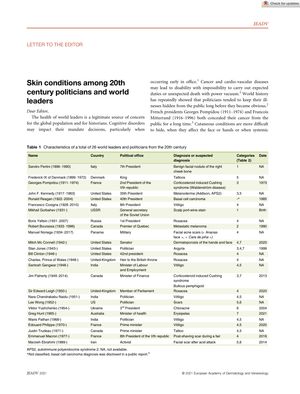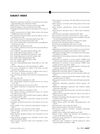Skin Conditions Among 20th Century Politicians and World Leaders
July 2021
in “
Journal of The European Academy of Dermatology and Venereology
”

TLDR Many 20th century politicians had skin conditions, with vitiligo being most common, affecting their image and political life.
The document discusses the skin conditions of 26 world leaders and politicians from the 20th century, highlighting the impact these conditions can have on their public image, political life, and decision-making. Vitiligo was the most common condition among the individuals listed, followed by rosacea. The study categorizes skin conditions into seven types, including 'trademark' lesions like Mikhail Gorbachev's port-wine stain, conditions that reveal systemic diseases or treatments such as John F. Kennedy's suntanned skin due to Addison's disease, and conditions that have a negative or positive impact on public image. For example, Manuel Noriega's facial acne scars earned him the nickname 'pineapple face,' while visible scars from an acid attack or assassination attempt could be perceived as signs of bravery. The study acknowledges its limitations, including its non-exhaustive selection of cases and the exclusion of skin features associated with aging, ethnic features, and presumed cosmetic treatments. The authors suggest that further studies could explore coping mechanisms and outcomes, as well as the impact of politicians' skin conditions on the general public and patients. No funding sources or conflicts of interest were declared.



